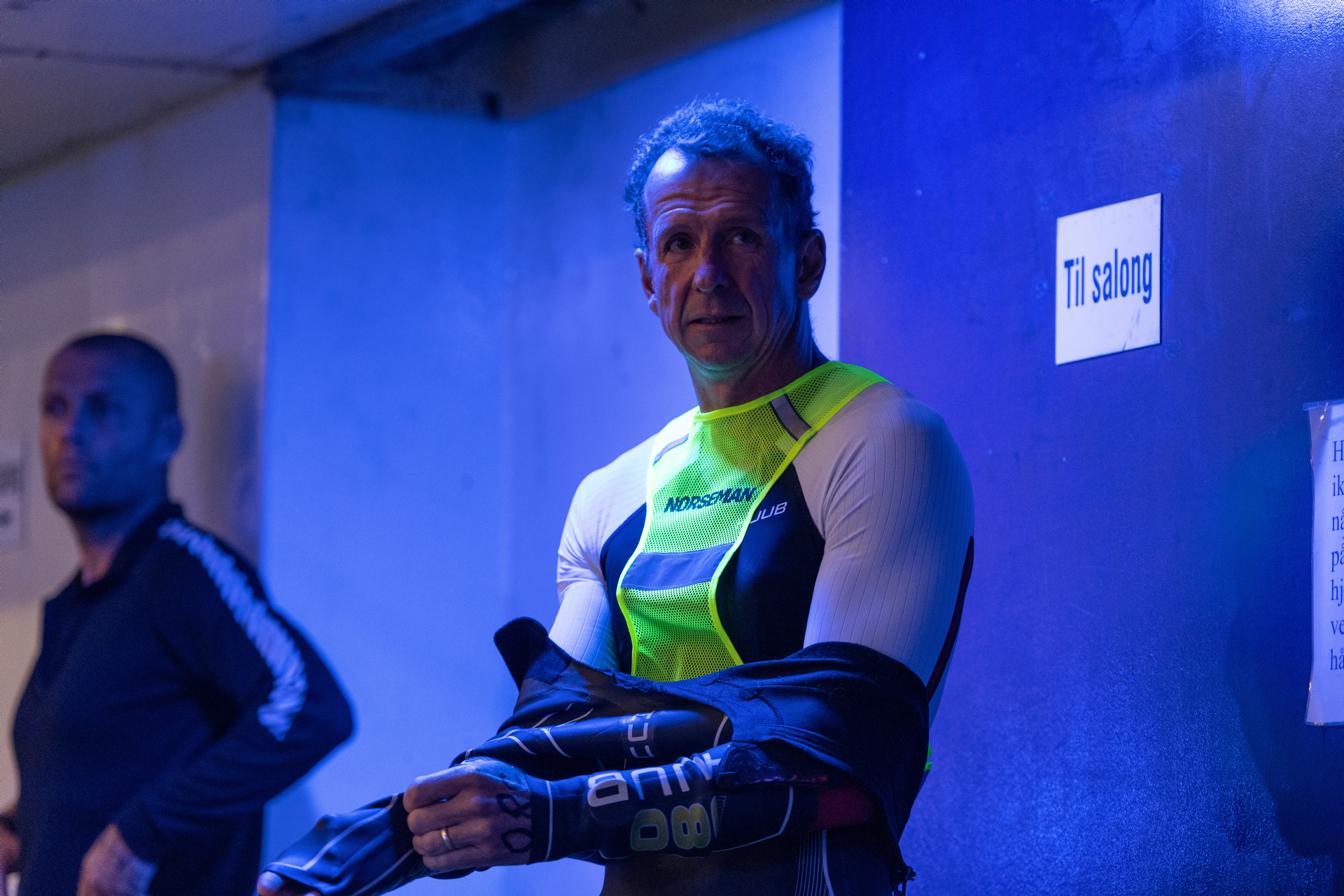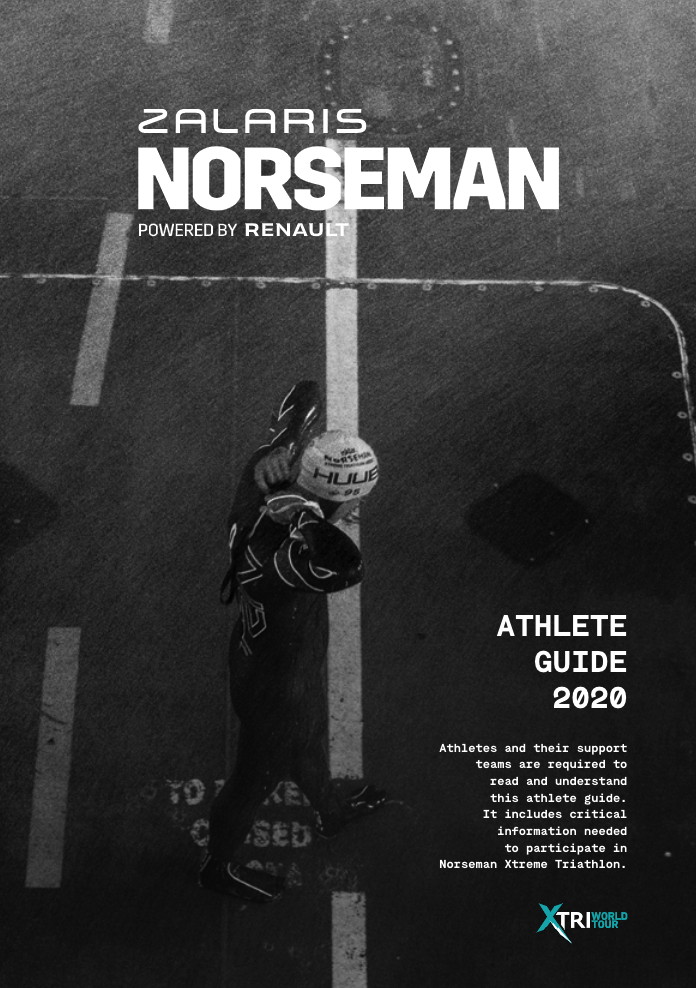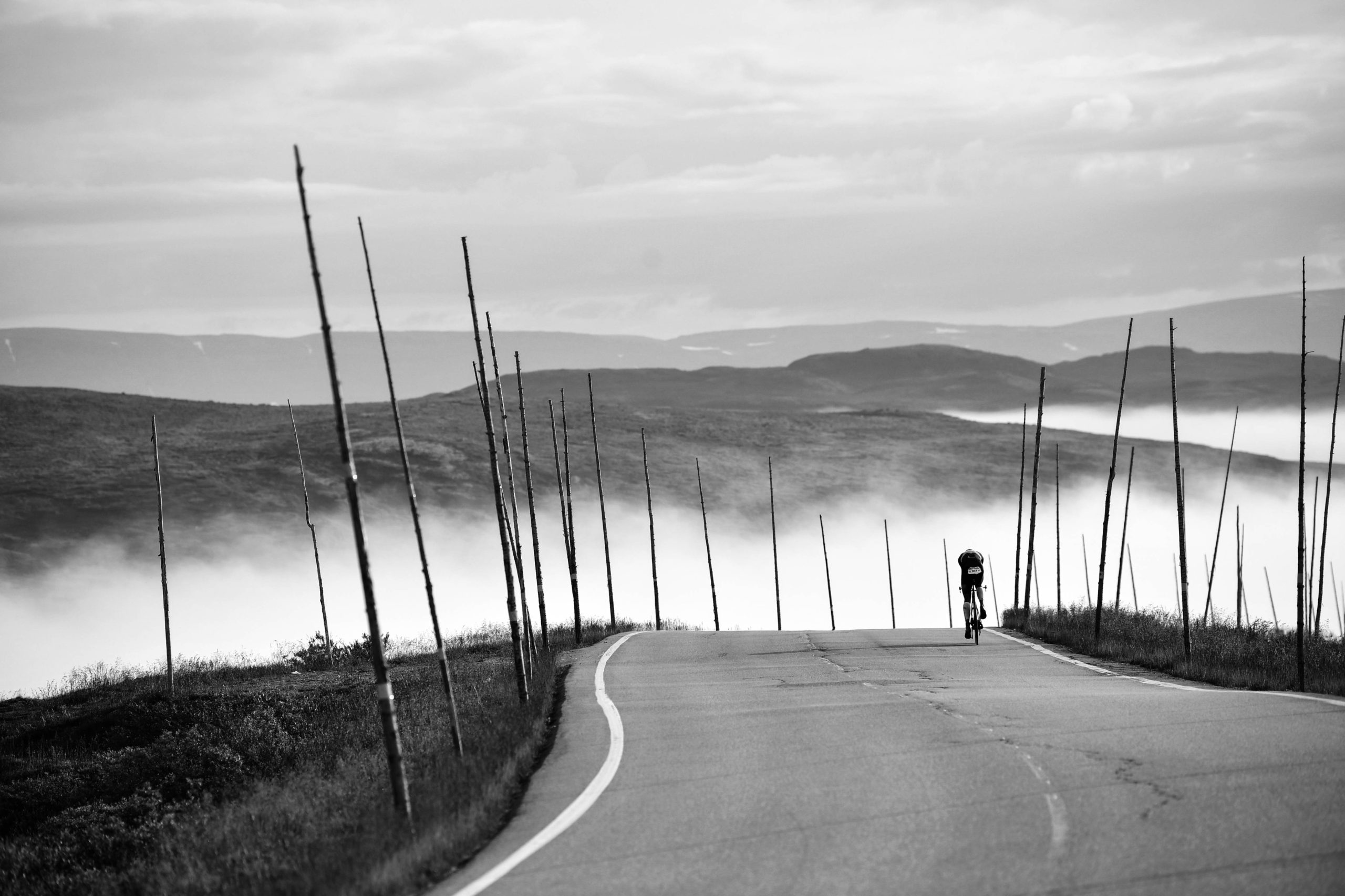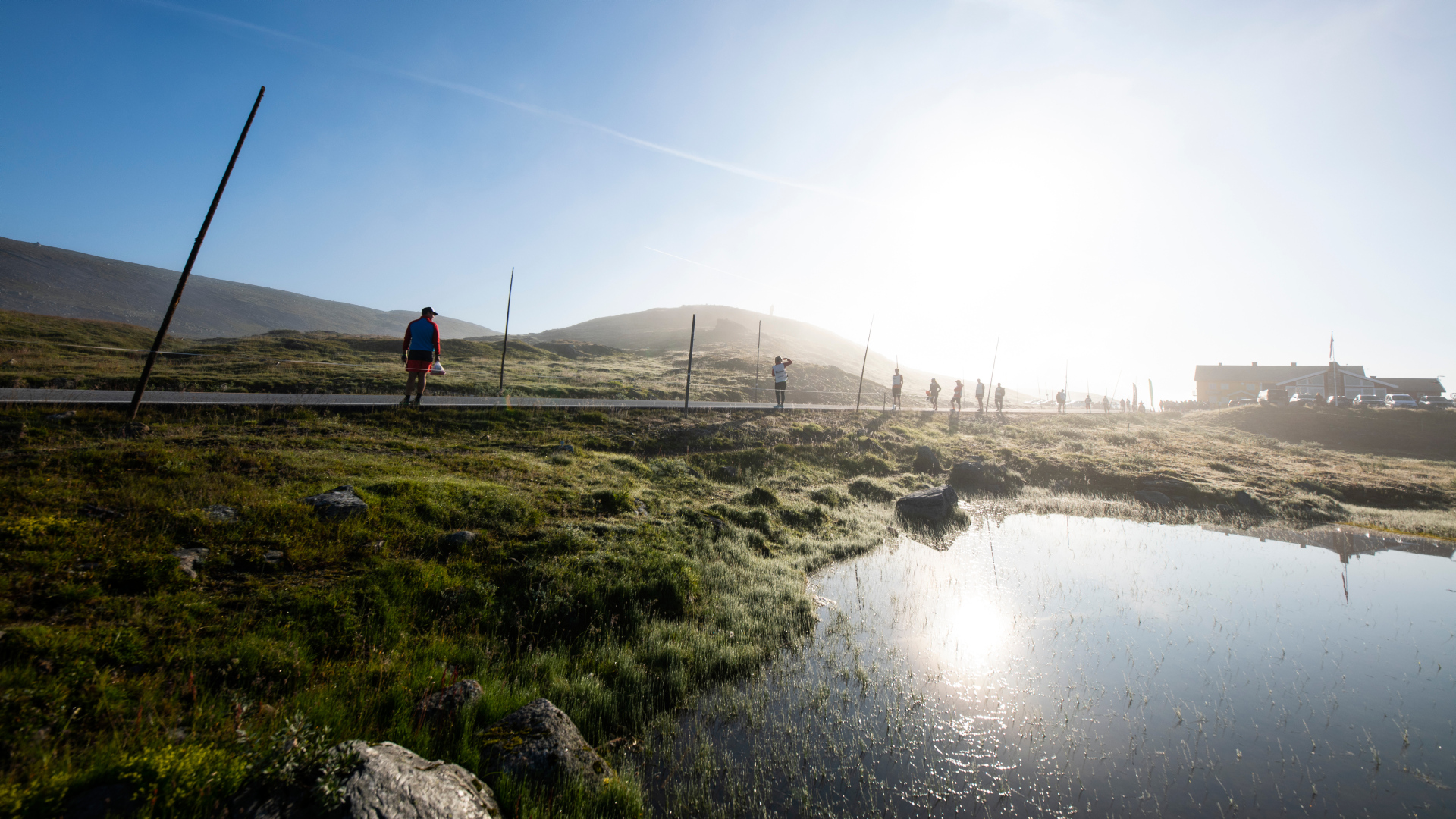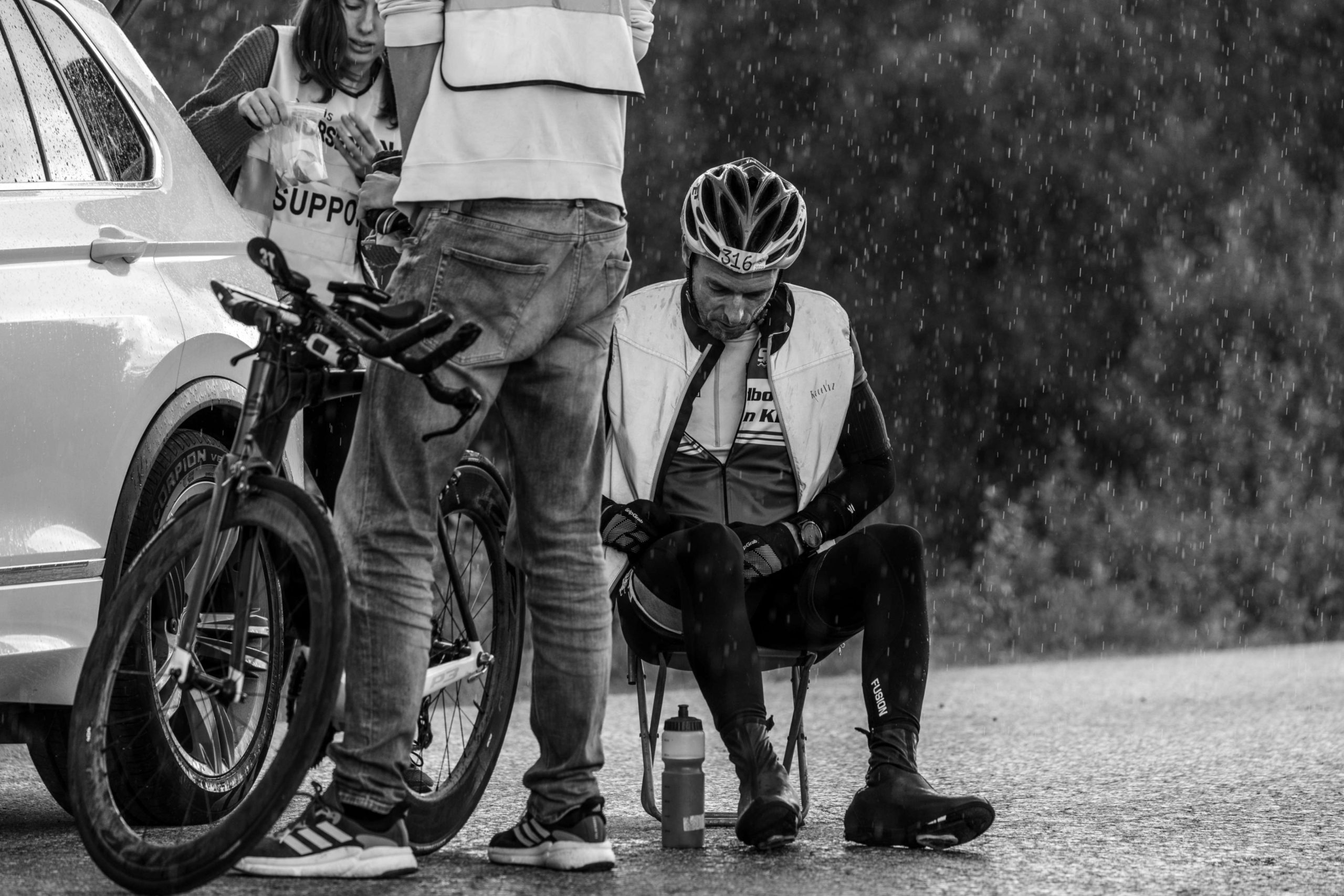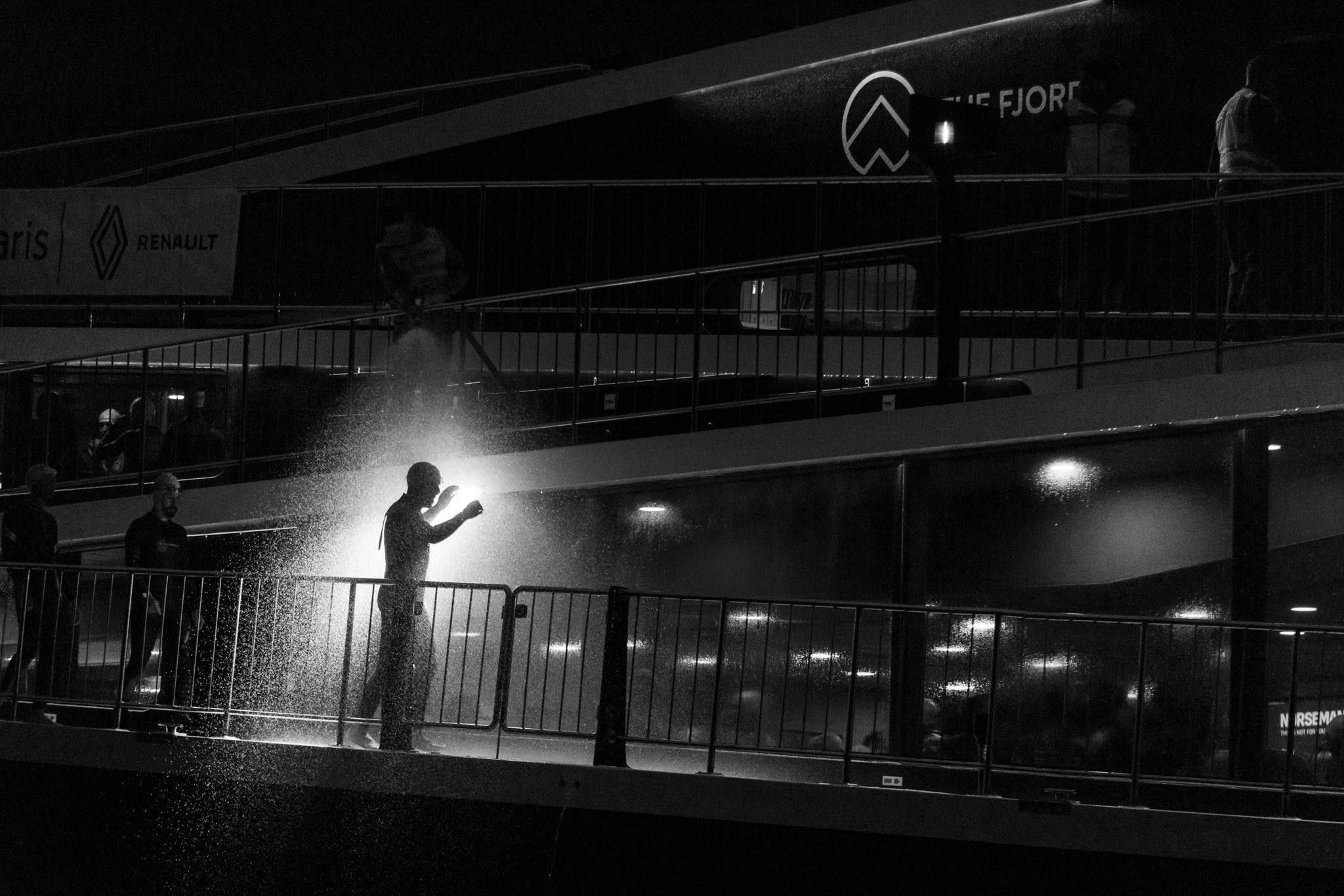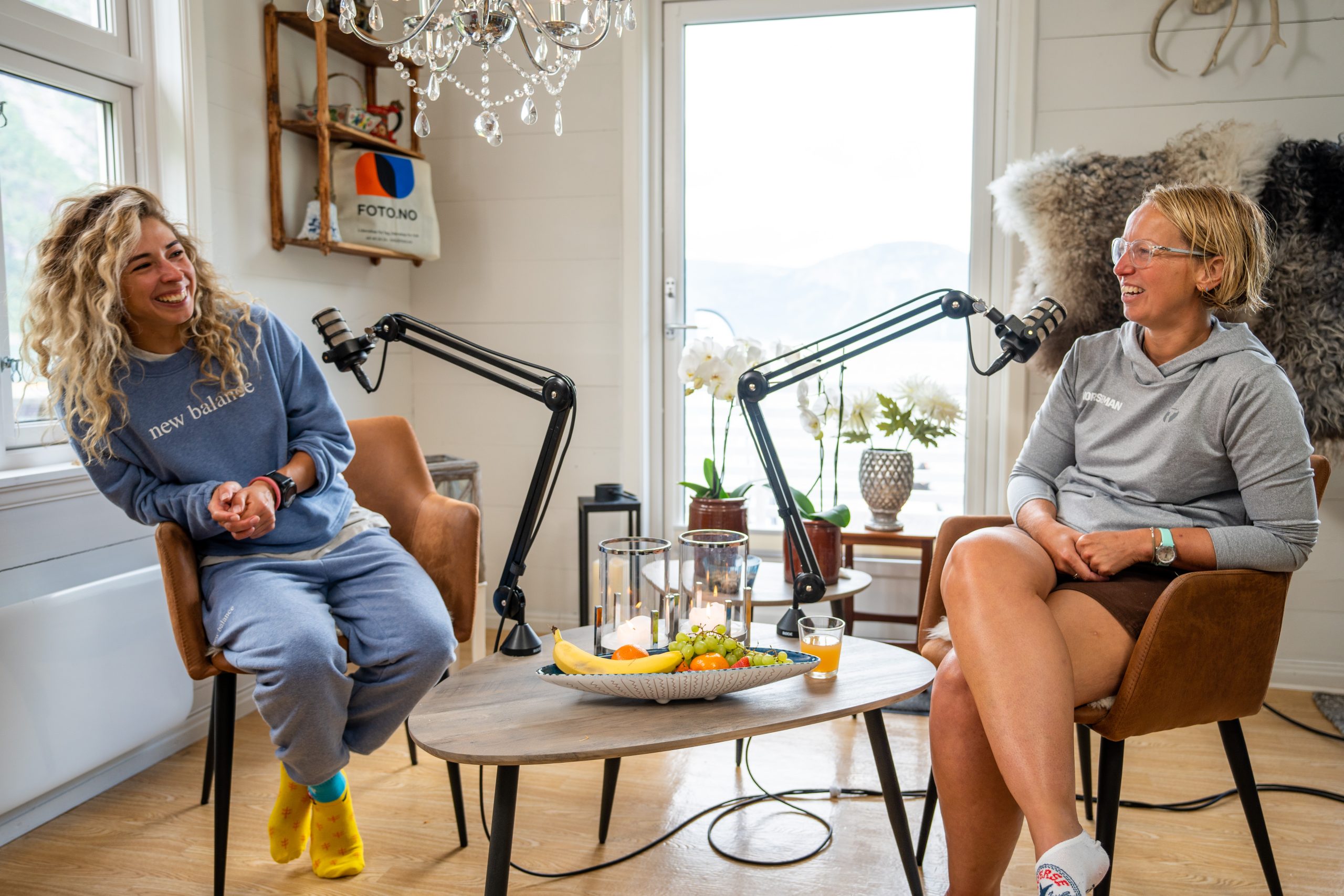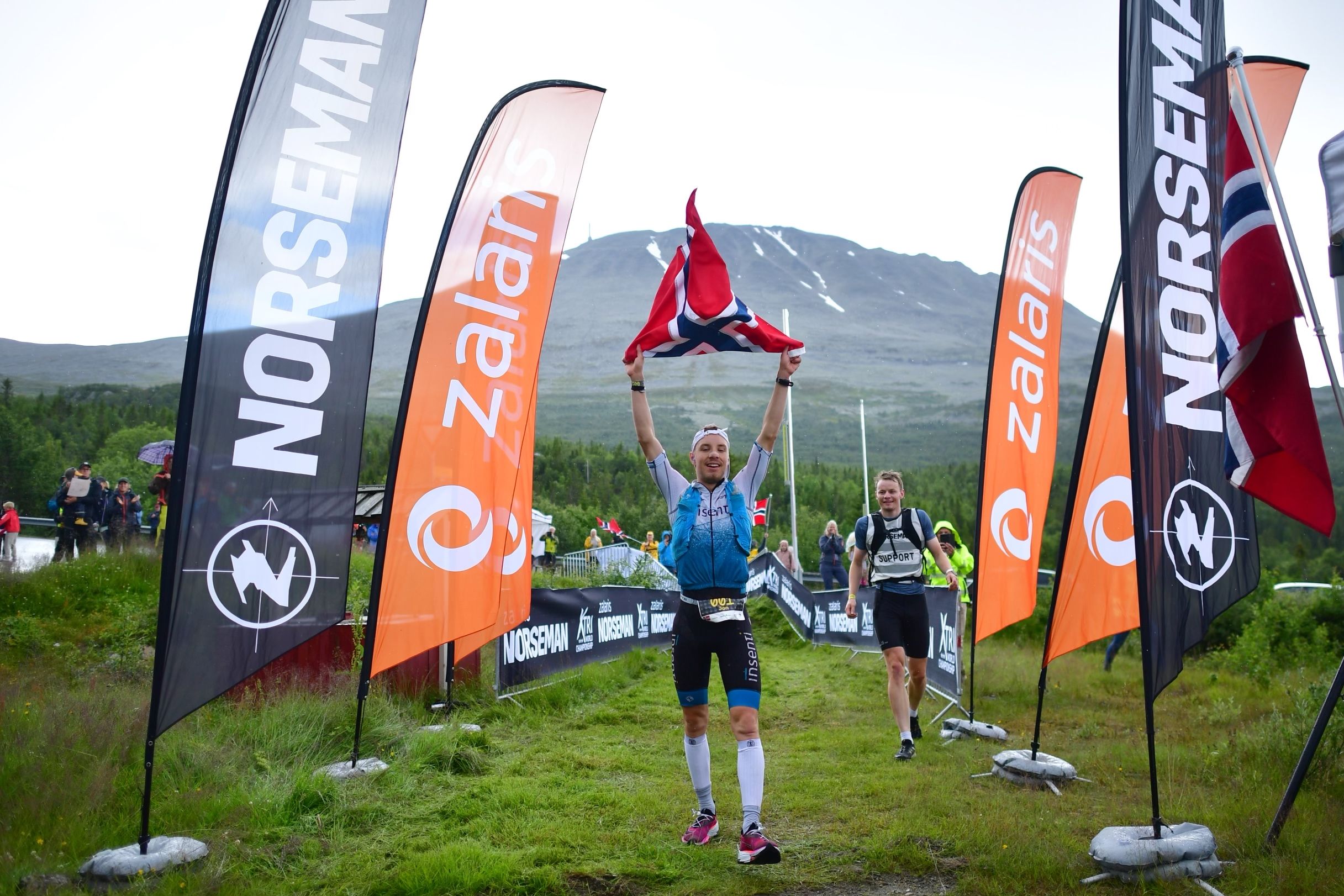Listen to the episode on:
Scroll down for the full episode notes with accompanying images.
This episode before the COVID-19 pandemic escalated, but our guest could not be more apt in helping us come out of the current challenges.
Our guest has had an extraordinary career so far, from being a 1992 Pentathlon Olympian to helping beginner to elite athletes achieve incredible feats and optimize their performance.
Last year he took on Norseman and with a brilliant swim, making him one of the first out of the water, he achieved the world’s most coveted black t-shirt.
It gives us great pleasure today to have Professor Greg Whyte on Norseman Radio.
We hope this episode guides your transformation into a mentally and physically stronger person, so when the time comes, you’ll be more than ready to take on Norseman 2021, or any other challenge on the horizon.
Stay safe, train safe, follow advice on social distancing and enjoy this conversation.
In this short episode you’ll learn three key things:
- Creating a plan
- How to build your support team with harmony, performance, skills and practice
- Mental preparation
Adelaide: Welcome Greg Whyte to Norseman Radio!
Greg: Thanks for having me. It’s great to be here.
Adelaide: I’m really excited for our conversation today, because you completed Norseman last year and you’re also involved in some really amazing projects and research.
So before we jump in, would you just sum up for our listeners, who you are and what it is you do in the world today?
Greg: I am Professor Greg Whyte. I’m a professor of Sport and Exercise Science here in the UK.
I guess my journey started in athletic terms as a swimmer up until the age of about 14. I then moved to a sport called modern pentathlon, at which I was fortunate enough to be good at. I won European Bronze, World Championship Silver Medal and I was an Olympian at the 1992 Olympic Games.
And then because of my academic route combined with my sport, I went on to become the Director of Research for the British Olympic Medical Centre, where I looked after the preparation of five Olympic teams.
I then set up the English Institute of Sport and helped set up the Irish Institute of Sport, and now I currently have my own clinic on Harley Street in London, the Centre For Health and Human Performance, in which I help others to try and achieve some incredible feats across the spectrum. From cancer patients all the way through to elite athletes in optimising their performance, with a special interest in endurance sport and ultra endurance sport.
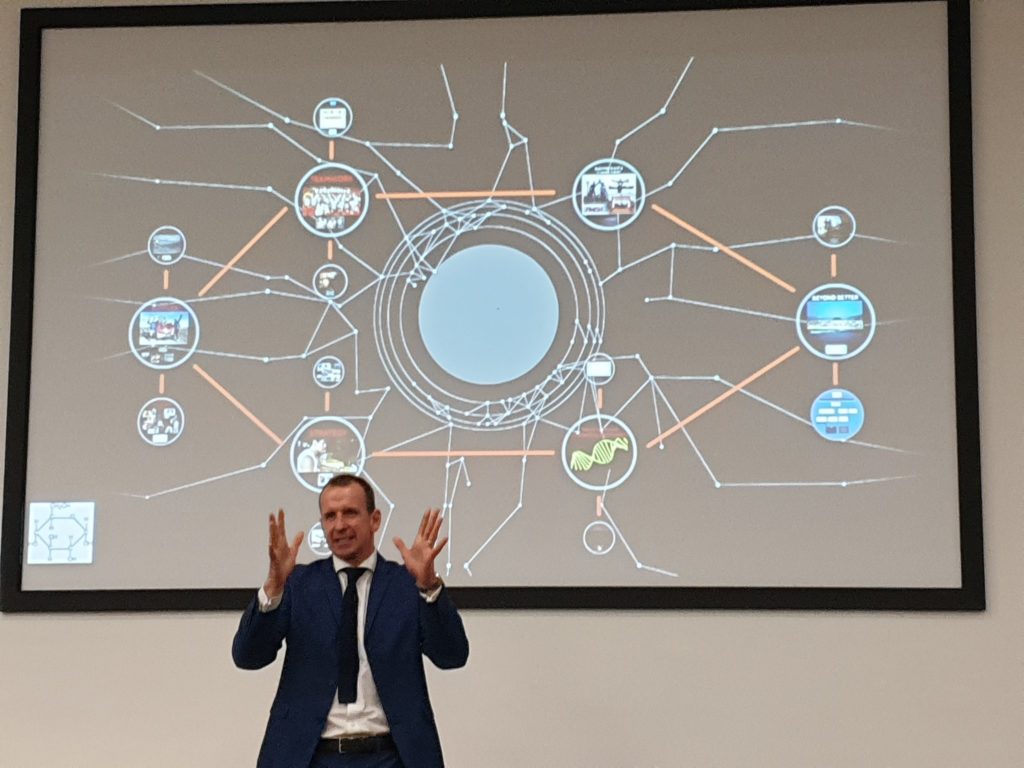
Adelaide: That’s incredible and quite a lot there to unpack! What’s been one the most amazing endurance projects you’ve worked on?
Greg: I’ve honestly worked on so many fantastic projects or individually, so my own projects and then working with others.
But most recently, I’ve literally just come back a week ago, I helped an American client of mine called Kyle Vogt break the world record for seven marathons on seven continents!
And if you can believe it, we did the seven marathons on seven continents in 81 hours, which when you put a time limit on endurance, is when it really gets special. It was actually a world record to touchdown on seven continents that quickly. Nobody’s ever done it that quickly, just touching down. And when you try and do that not only the physicality, the physiology and the psychology of running seven marathons in such a short space of time, but actually the technical tactical logistical feat of true endurance, really does make it one of the best projects I’ve ever worked on.
Adelaide: I was following you on Instagram and looked crazy and amazing all at the same time!
Greg: It was all of those things! It’s something that you would never normally do. I think the wonderful thing about iconic, ultra endurance and endurance, is that if people watch it and think, wow, you know, why would you do that? I would never do that. And how would you do that? I think that, to me, is what Norseman is now. I think that when you look at Norseman, it is not a standard triathlon, there is so much about it that makes it all of those things. It has that wow factor.
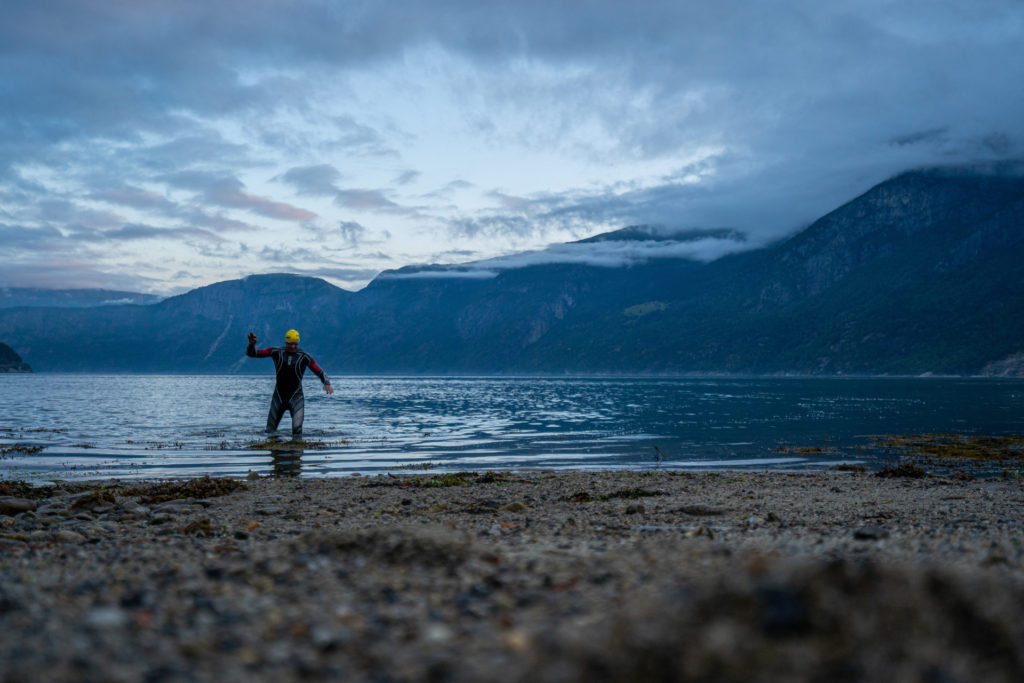
Adelaide: And if we look at the ‘how factor’ – not the wow factor, you said that you are particularly fascinated with time and endurance events, and what that does to the body physically and psychologically.
If we break it down and just look at physical performance and how having a time cap impacts that and what you’ve learned in the seven marathons and again in Norseman, what would you say is the one thing that you see people continually struggling with?
Greg: Oh, wow, that’s a big question!
I would honestly say I think there are really complex answers you could give to those questions. But I think it comes down to the simple things.
I think the one mistake I see most people making his lack of planning. They simply haven’t planned exactly what they’re going to do, how they’re going to do it and when they’re going to do it. And that comes down to pace management, it comes down to technical aspects of actually being on the right bike, having the right wetsuit, I think it comes down to technical aspects around feeding, if they haven’t planned what they’re going to eat, when they’re going to eat and how often they’re going to eat. I think it’s really simple as it sounds.
From my experience over how long I’ve been doing it and all of the challenges I’ve ever done, planning is the absolute key to success.
Adelaide: When you came to do Norseman, for those who don’t know, you’re given an extensive athlete guide, how did you read that and break it down into a plan that was successful for you?
Greg: What I tend to do is an ‘If Then Plan.’
What I’m trying to establish is that there are certain things like how far you’ve got to swim, you know how far you’ve got to cycle and run, and to some extent they’re a given.
So in terms of preparation and planning, you know where you’ve got to get to, both physically and mentally.
Then what I do is take a look at the risks: what are the risks of not being successful? What are the things that are really going to stand in your way?
For example, let’s take the swim. We know the swim temperature is cold and it will always be cold because it’s glacial fed and brackish, it’s not fresh water.
And people say to me, what difference does brackish make? Well, it makes a big difference in terms of buoyancy and irritation and rub, so you can pick up problems that you wouldn’t normally get in lakes and rivers.
I think the temperature issue is really important, because that temperature can have a profound effect and preparation for temperature is really important. So that becomes a risk.
So now I’ve got IF this happens and next is, THEN this happens, and here I plan the solutions.
So we have an idea about how cold the water is going to be and therefore, what’s the right wetsuit and the right wetsuit is not necessarily the same wetsuit that I’m going to wear.
If I was wearing a wetsuit in the Caribbean, it’s not the same wetsuit that I would do a British based triathlon, because actually if it’s a freshwater triathlon Vs. sea water triathlon. So you’re really trying to dissect it down.
When I receive the athlete handbook, what I’m really looking for are the things that could be problematic: what are the things that are risks?
I think one of the biggest risks in Norseman, and it’s so important, is the team that you have with you, because there is no on-road support. There are no feed stations and no support provided on the route, so your team becomes absolutely instrumental in your success.
I think selecting the right team and making sure that team is incredibly well briefed as well, is the make or break of Norseman.
If you’ve got the wrong team, or the team don’t understand or have a feel for what your strategy is, then it can just fall apart.
We saw this year before last on the mountain with some of the elite guys. They’d chosen people who couldn’t keep up with them and you have to stay with your support. So all of a sudden what you’re doing as an athlete, is you’re slowing down because your support can’t keep up – wrong choice of team.
I think the athlete handbook is incredibly important and what you are looking for is just making sure that you eliminate or certainly reduce the impact of risks that makes Norseman unique in comparison to other triathlons.
Adelaide: You have some incredible experience with directing and building high performing teams?
Greg: Yeah for sure, in various guises, from a business sense like my clinic in London is world leading, and it includes world leaders across the board in Sport and Exercise Medicine.
And I think from a challenge perspective, pulling teams together, I’ve worked with a big charity in the UK called Sport Relief and Comic Relief, and I’ve worked on 32 big challenges with them.
Pulling the right teams together for those type of challenges, with high profile celebrities taking on really tough endurance challenges is critically important.
So yes, I’ve sort of looked at teams across the board and I guess to some extent, successes and failures and experiences across that has brought me to where I am now about how we actually design the team that we surround people with.
Adelaide: Bringing that down to a much smaller scale to your Norseman team, how did you bring all of your experiences, lessons learned and what you teach in business, to creating your Norseman team?
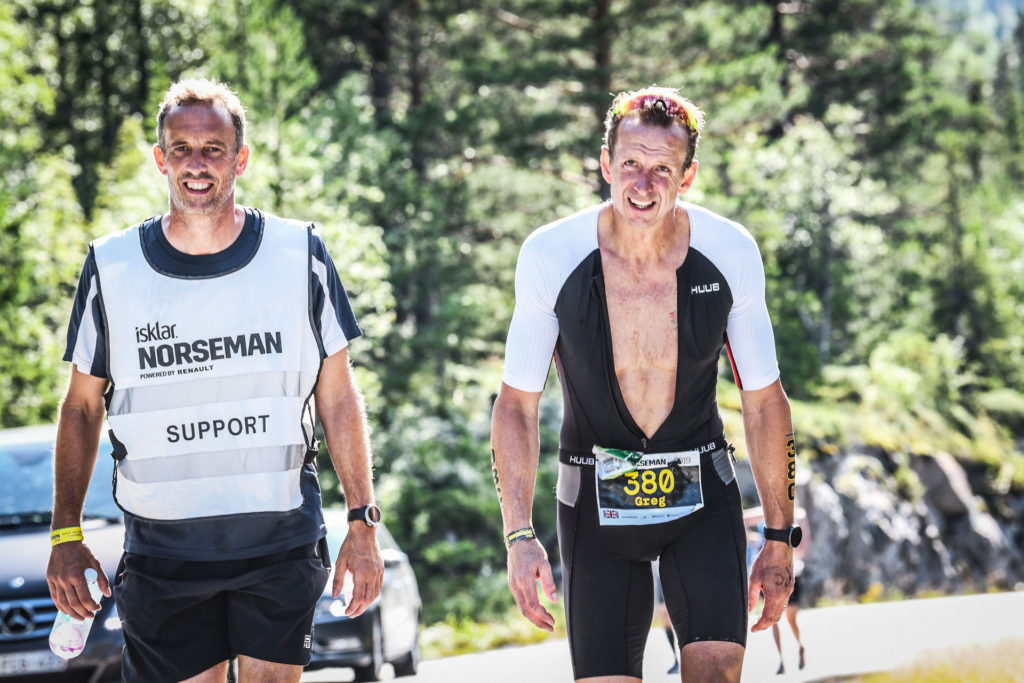
Greg: Well, it’s an interesting one. There are lots of things about it and aspects to how you’re choosing your team, performance is definitely one of them.
For me, this was my own road support, because for Norseman you can be supported from 17km onwards, and you have to be supported up Mount Gaustatoppen if you make the cut-off point for the black tee.
I chose somebody that I knew who could perform. He’s a quicker runner than me and we’ve been lifelong friends. He is a former international athlete, and critically, and this is same for all members of the team, he is a very close friend of mine, so he understands me, and he understands what I’m going through. He’s done multiple long course triathlons and has an empathy with what is actually happening. So that means the support he’s able to offer is not just running alongside me, he can actually understand what I’m going through and can make decisions for me.
When it comes down to things like navigation, it is crucially important, because if the team loses you on the road, then all of a sudden, you don’t get fed, you can’t top up your fluids, all of these type of things.
So making sure you’ve got an experienced navigator matters, even though the course is incredibly well marked, it still doesn’t stop people going the wrong way.
I also took with me a documentary team. So we filmed Norseman as part of a documentary that we made. Therefore the crucial element of all of that, is that we are in essence a family. And because of that, we’re good friends, and I think harmony in a Norseman team is really, really important – actually, for any endurance team.
For example, I raced the Race Across America cycle race, they call it the toughest cycle race on the planet, from West Coast to East Coast is 3,100 miles, and we race as a team of four. You see on a race like that teams crumbling, because everybody is under stress, everybody’s fatigued, everybody’s sleep deprived and everybody’s pushing to perform as well as they possibly can, and often all of that breaks the teams. And once the team is broken, it’s all over for the athlete. So making sure that your team can actually work together is absolutely crucial. So how you select is really important in the first place.
Adelaide: That’s really interesting. Did you bring everyone together beforehand? Or did you just know from intuition that they’d work together?
Greg: Practice is everything. Practice as with all these things, is about the planning. When it comes to Norseman and events like this, the best way is to assume that it is a business. You are trying to get from point A to point B. You’ve put in at least six or nine months of very specific training and that’s on top of the normal training you’re doing. The commitment in terms of financial, technical tactical, the time away from family, there’s a lot that’s been given.
What you want to make sure is that everybody can perform. We have practice runs where we get together as a team and we’d do various different things in the build up, much like you do in training.
Norseman isn’t your first triathlon of the year, you’ve done an Olympic and maybe a 70.3 to test your processes.
The same is true of the team, you want to make sure you’ve practiced with your team to make sure they know what they’re doing and they work as a unit.
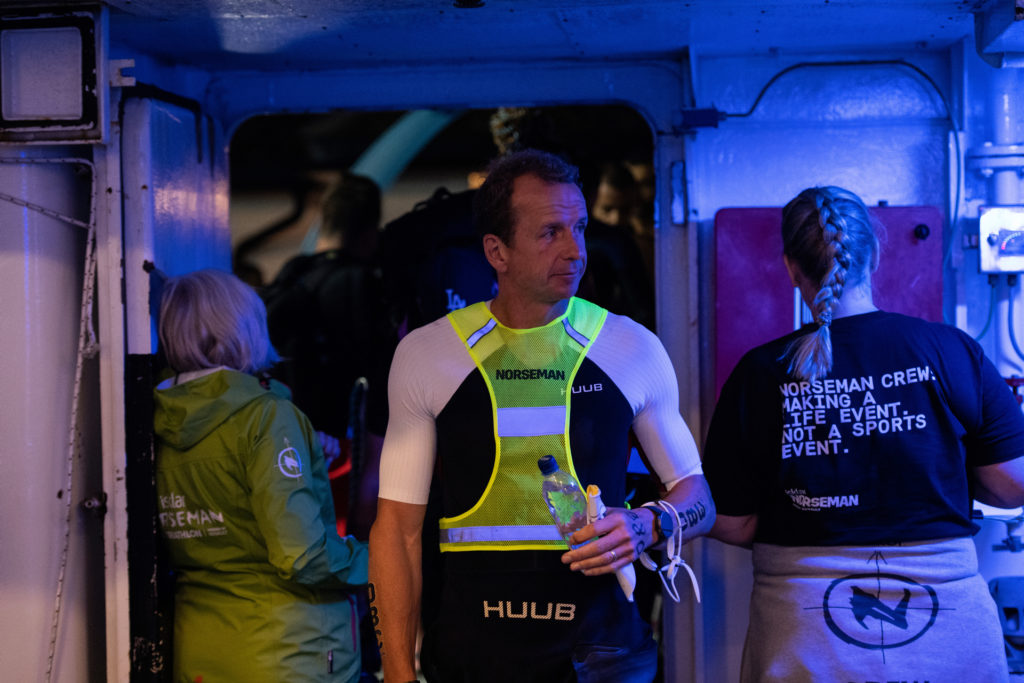
Adelaide: So what they say is true, practice does make perfect!
Greg: It sure does! I think often people sort of forget, as I think I’ll just pull a group of mates together and it’ll all work. And of course, if it was that simple, everybody would be doing it. It just isn’t that simple. And there’s an education process for everybody in that team to make sure that the team operates as it should.
Adelaide: I can only imagine. I’ve watched various teams do Norseman now and you can see how everyone has been assigned their different processes. It’s interesting to hear, especially from your expertise and background, how you made it successful for you.
Greg: Yeah, that’s a really good point. Creating a team is very bespoke and individualised. The advice I give is very generic, general advice. But what you have to do is then take that advice and tailor it down to the individual.
This is often the case in sport, is that people look at high performers and they look at what they do, and they assume that’s going to work for them.
Of course, that is absolutely not the case, because there’s such big differences between the elite end of the pack, and midway down and at the back of the pack, and the way you have to approach it is incredibly personalised to you.
So what you have to do is work on your personal plan, not work on the generic plan that the others are doing.
Adelaide: Talking about working on different plans and approaches. When I asked you, what would you love to talk about norseman, you mentioned that the bike course was frightening. So could you tell us about your experience of the bike course and why you found it to be frightening?
Greg: Frightening. That’s a tame word to use for it.
Funnily enough, I was with a friend of mine this morning, as we were training together and he’s doing his first long course triathlon in June.
We were talking about the course and the first thing that struck me, is that I never knew Norway was mountainous. I always describe the final big climb as alpine. Going up it reminded me of Alpe d’Huez. I think it’s the enormity and the almost incessant climb on that bike ride, which is frightening.
You see on course, that people break mentally, before they break physically, because it is gruelling. It’s really tough. I always say to people that the climbing starts when you’re out the water. So that’s the warm up, to the warm up to the big climbs. So you climb up to this plateau, the highest plateau in Europe and then it’s from that point, to some extent, you can sort of think that’s the climbing done, but it absolutely isn’t. That’s when the big climbing starts.
Of course, I think what’s key about climbing is that yes, it’s physical, but actually, it’s incredibly technical. I think you watch good climbers, what they do is they’re technically very good at climbing.
The one thing I would say to people is, if you are going to take on Norseman, you certainly want to spend some time in the high mountains. I think you’d gain an awful lot physically, but particularly technically, on actually how to climb.
And add on top of that the other side of it. I topped out on my computer, on the decent, at 48 miles an hour, which is sort of over 70 kilometres an hour. I was absolutely flying and I think again, there’s such a technical aspect to that.
I think one of the things that you can make up a huge amount of time on is descending, if you know what you’re doing and if you’re safe. That comes from experience and training. So I think that the bike ride for me as a swimmer is frightening.
But I think the one thing about Norseman’s bike ride is that not only is it physical, it’s incredibly technical and tactical about how you’re going to address it. I think if somebody is coming into Norseman for the first time, then having a real in depth understanding of the course and how it plays out, and then backing that up with some technical and tactical training in the high mountains, is probably the best investment in the cycle training that you could have.
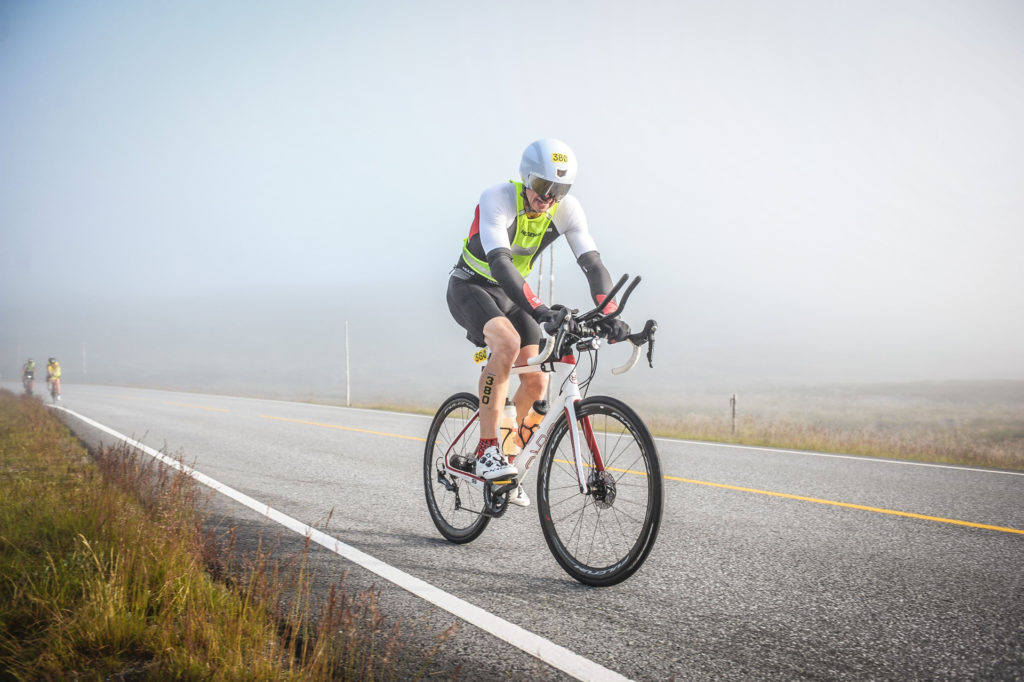
Adelaide: Is that what you did for your training as well?
Greg: I was lucky enough to get some insider info, but actually the great thing about these sort of forums is that people will tell you this. What what I’m saying now, is not new to most people who want to take Norseman.
What I did was take that advice and spent a lot of time in the hills, if you want to be on top of the hills, it was properly brutal.
I remember at one point looking down at my Speedo and I wondered how I was still upright on a bike that was moving that slowly.
What you’ve got to do and this always sounds a bit crass, but you’ve just got to do it.
There’s no point getting on the bike at Norseman and thinking to yourself, I wish I’d have spent some more time in the hills and in the high mountains. What you’ve got to do is, you’ve got to take the advice, take what people are saying as truth, and actually do the training that’s required for it. Then it’s still gonna be tough, but at least you have the opportunity to enjoy how tough it is.
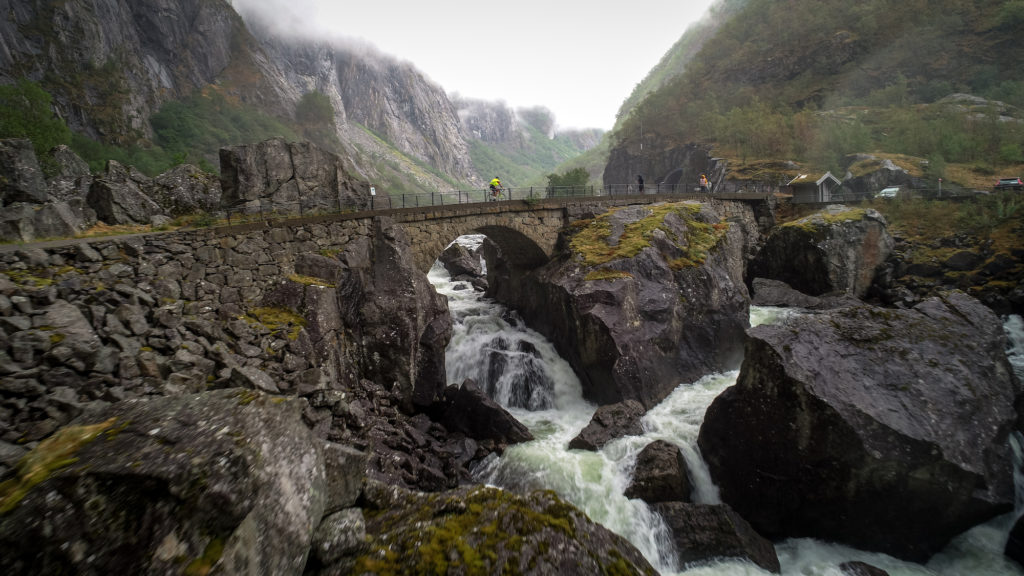
Adelaide: Talking about toughness, we’ve spoken about the physical aspects of training, but you said that when doing endurance challenges such as Norseman, you break mentally before you break physically.
So how did you mentally prepare for Norseman? And how do you help others mentally prepare for challenges like the ones you do in Sport Relief?
Greg: Firstly, it’s understanding the enormity of the challenge.
It’s an interesting one because when I do things like Sport Relief, what I’m working with is celebrities who have never done anything physical before, so they have absolutely no experience at all. So part of the training process is to get them to understand how it works.
For example, we swam the English Channel with a celebrity called David Walliams. One of the first swimming sessions I did with him, after just a couple of weeks of starting training, was I took him into cold open water, and it was cold. I think he would describe it as frightening. But what it was, was an instant understanding of how tough it was going to be, because I think when it comes to psychology, I think that knowledge is king.
I think that you can underestimate how tough these challenges are. You can only train appropriately if you understand how tough it is. Then what you’re trying to do in training, is you’re you’re trying to replicate it to some extent. That doesn’t mean that you’ve got to do a long course triathlon to prepare for a long course triathlon.
There are lots of tricks that I use in training, which will take you to the edge of that psychological limit, without actually spending hours, upon hours, upon hours of training.
For example, in the pool, I would do something like 100 100’s of a swim rest of 90 seconds when it comes to Sumo self swimming, swim rest of one minute 30 doing 100 100. People say to me it’s crazy, but off of 90 seconds is not full gas, but it’s speed maintenance. So definitely you’re trying to sit on on the speed, which physically is very tough, but you are capable of doing it. But in a pool it is so dull, it is absolutely excruciating. What you get from that, is that you create strategies.
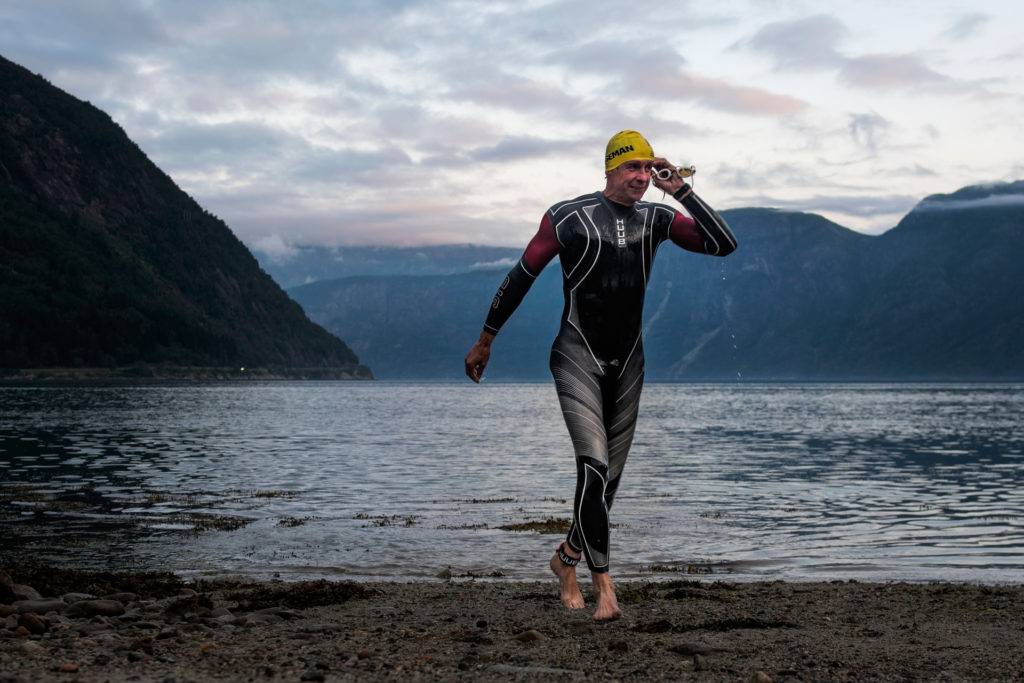
So you create coping strategies that will help you cope with sitting on that limit and just holding on to it. That becomes really valuable when it comes to the challenge itself. So when it comes to the Norseman swim and I think about the swim on a long course, the distance is never an issue for me ever. I never even think about the distance, it becomes an issue of pace, and that’s about planning and pace management.
Interestingly I do similar stuff on the bike and run. You are obviously working up to race distances in training, but one of the key sessions on the bike I do is an hour called square wave. It’s one hour constant wattage on the stationary bike.
I do it weekly and every week, I’m trying to get average power output higher and higher and higher. It is one of those things in which the final 20 minutes are absolute purgatory. But again, what you do is develop coping strategies. You develop an understanding of what misery really is when it comes to the bike on Norseman.
You think to yourself, this is tough, but what you’ve got is a scale to work on. So you know what easy is and with training, you know what misery is. So what you can do, is you can gauge how close to true misery you actually are, which I think is really important in coping with it psychologically.
Adelaide: When you were in misery during Norseman, what was your go-to coping strategy?
Greg: To some extent, a very simple one, and I think it does actually change for me. There are two things that I always use and every client I’ve ever had also uses, and they are:
The first thing is the one pedal stroke. Forward is a pedal stroke close to the finish and so long as you keep going, you will get there.
I think that sounds really simple, but one of the biggest downfalls for people, is that they get to a point where they think, ‘I’m just not gonna make it’. Whereas actually, the truth is, when you get onto the mountain on the run of Norseman, if you can just keep pushing when you get to Zombie Hill, as difficult as that is, if every footstep that you put forward is a foot step closer to the finish, and if you just keep doing that, you will get there. So that that becomes a really important mantra for me.
The other one is I’ve this weird thing that I say to people and that is about squeezing, I say squeeze it out.
The analogy there is with toothpaste. When you come to brush your teeth in the morning and you get your toothpaste tube, it looks like the toothpaste tube is empty. However, if you just spend a little bit of time squeezing it, rubbing it with your toothbrush, pushing harder and a little bit more, you can always squeeze a little bit more out.
The weird thing is that when you think the toothpaste tube is empty, you can probably get another week’s worth of teeth brushing out of it. And for me, that’s a great analogy when you’re in sport. When you’re on the bike or you’re on the run, if you just think to yourself, there is always more in you. All you’ve got to do is just squeeze it out. I think if you can keep that in your mind constantly, the human body has an incredible capacity for endurance. All you’ve got to do is learn how to take out.
Adelaide: That’s fantastic advice and I totally agree with you. Changing subjects completely, as unfortunately we do have a time limit. You run a business, you have a wonderful family and you do these crazy kind of challenges. How do you balance your time and energy to fit everything in?
Greg: My family is by far the most important thing to me. Often people look at my lifestyle and they actually think it is probably the least important thing. But it’s not, it’s actually the most important thing.
This squares the circle quite nicely, because it brings us back to our first point and that is, it is absolutely about planning. Planning is crucial, not for you, not just for me personally, but it’s absolutely crucial for everybody else around me.
Everybody knows that I’ve got a plan, and what I need to do is take that plan and articulate it to people so they know exactly what I’m doing and when I’m doing it. So in doing that, what you can then do, is you can structure ways around it. So to some extent, you have to be relatively disciplined. You have to be very disciplined and quite rigid, but not completely rigid about it.
For example, if it says swim session 5-7am, then I get up and do my session in the morning. What I can’t do it think that I can’t be bothered and roll over, because now what I’m trying to do is squeeze a swim session when I should be out with family, or should be doing something else.
I think what’s really important is that you get that plan. And on top of that, we’re coming back to what we spoke about earlier about team. I think what’s really important is to get people around you, so get the family around you who share your vision, and they understand why, on Sunday morning, I’m going out for 4.5 hours on the bike. I’ve told them I going out, so they expect me to go out and they also support you.
I do simple little things like put my training plan on the fridge, so my three children and my wife know what I’m doing on a daily basis. This means there are no surprises.
I think if you can plan it and articulate it and bring your close family and friends, your team on board with it. I just think it makes it that much easier to deliver. In doing that, you also need to plan work time, family time and friend time. This sounds a bit geeky, but what you’re doing is you’re planning your life. I think if you are going to try and achieve these big endurance challenges, the only way to do it is by planning.
Adelaide: I’m also a geek like you and that’s what I do! So I completely understand where you’re coming from. That’s really great advice. Thank you. Before we move on to the Norseman Radio Lightning Round, my final question is that you have already made such an impact in the endurance performance world, but what legacy would you like to leave behind and where do you see yourself having further impact?
Greg: It’s an interesting one, because as I age, I’m 52 now, and I think actually still, generally in society, as you look through a polarised lens when you’re inside triathlon, actually nobody talks about age in the general population, but I think most people see that at 50 years old you should have a smoking jacket, a pipe and a lovely comfortable seat and you know, put your feet up and watch telly.
To me, what I I love the most is when I tell people what what I do and they say to me, how old are you? And when I say 52, that’s the point at which they think, oh, that’s incredible!
Well, I’d love people to think that age is just a number.
The way in which I train and obviously things change as you age, so the training I do now is different to the training I did when I was 20.
Critically, I think one of the key things that changes with ageing is recovery and the speed of recovery, it takes longer to recover, which means I have to be more targeted with my training.
So in essence, in my mind, I can still achieve the things that I did when I was 20. I might not be as fast for various physiological reasons, but I can still challenge myself.
The legacy I want to leave behind is for my children, I think is to say that anything is possible. It’s not about age. It’s not about gender. It’s not about socio-economic groups. It’s nothing to do that. It’s about you as an individual. And I think if anything, I’d love my epitaph to be anything is possible.
Adelaide: That’s such a great way to finish the episode! Before we wrap, we’re now going to do the lightning round!
How would you describe Norseman in just a one word?
Greg: I know, I’d have never believed it if someone had said to me, you’re going to end up racing professionally, and then you’ll develop this interest in exercising cancer, and then you’ll do a triathlon race and that will help you grow your interest! It’s funny how life works out.
Adelaide: Finishing on that really positive note, we just have a quick fire round!
How would you describe Norseman in one word?
Greg: Epic.
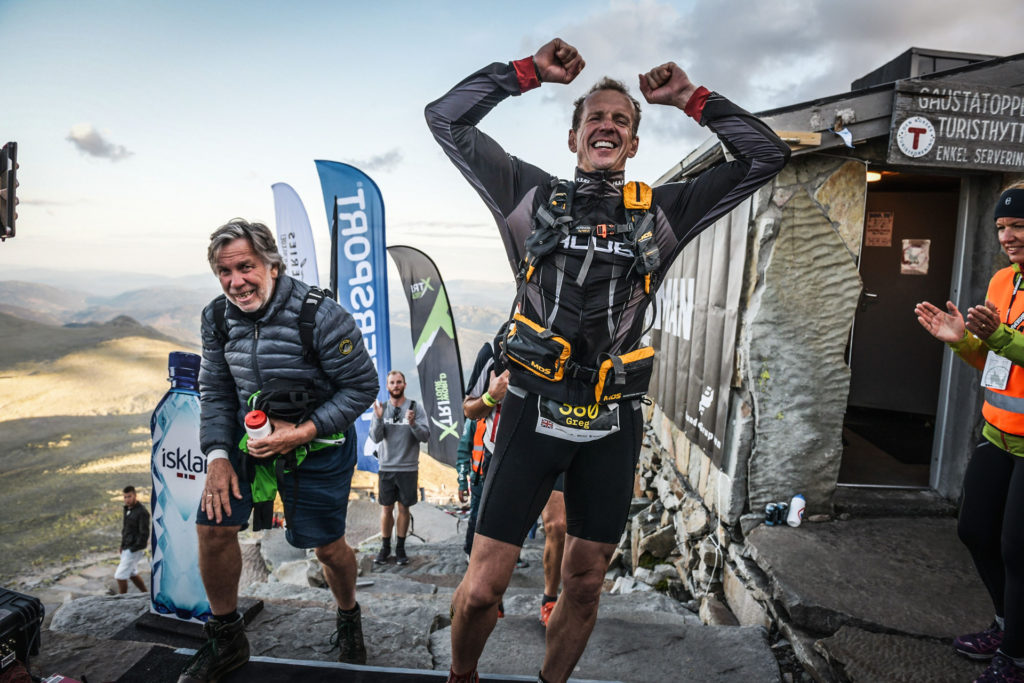
Adelaide: What three athletes would you love to see race Norseman?
Greg: I’d love to see Chrissy Wellington, double world Ironman champion, just to get her feel of what she thinks about it. To get that sort of level of Ironman athlete take on something like Norseman, a completely different challenge and get her take on it.
I was recently doing a piece on stage with Henri Schoeman, who is lightning in the water. He’s amazing, a Commonwealth Champion, Olympic Bronze Medalist, a great athlete, but a great swim runner. And I’d just love to see what his take would be on the bike, and how he would approach it, because I think that would be an interesting teller.
Then I think there are obvious people, like the Brownlees.
I’d like to see someone like Helen Jenkins, World Olympic Champion, Olympic Distance Champion, who’s a good friend of mine, Helen and her husband are really good. Helen just returned from injury and having a baby and I think that’s what we should be holding on to and promoting, that idea of anything is possible.
Helen is a truly outstanding athlete who, as a mother now and post serious injury, is able to come back and I think it would be great to see her tackle something as epic as Norseman.
Adelaide: Helen is brilliant and so lovely! Thank you so much for coming on Norseman Radio, it’s been an absolute pleasure.
Greg: It’s been fantastic! I really enjoyed it. Just in closing, I think I am in awe of anybody who has finished Norseman. It is a true challenge, without any shadow of a doubt, one of the properly epic challenges on the planet. I think for anybody listening to this, who is thinking about doing Norseman then get your name in the hat, because you will never regret tackling what is the toughest triathlon on the planet.
——-
About Adelaide Goodeve
Adelaide is a member of the Norseman media team and a professional mindset coach. Find out more about Adelaide here.
About Greg Whyte
Professor Greg Whyte is one of the world’s leading authorities in sport and exercise science, and 1992 Olympian in modern pentathlon, and European and World Championship medalist.
Greg is especially fascinated with performance and endurance and ultra endurance challenges, and as well as successfully undertaking tough endurance challenges feats such as Norseman, he also helps people try and achieve incredible feats across the spectrum.
If you’d like to connect with Greg, then you’ll find him on:
- Website: gregwhyte.com
- Instagram: @profgregw
- Facebook: @ProfessorGregWhyte
- YouTube: Professor Greg Whyte
——-
About Norseman Radio
If you’d like to listen to interesting and intriguing stories around the Norseman Xtreme Triathlon and fully immerse yourself in the experience, then Norseman Radio is for you.
This podcast is not just for those who’d like to jump off the car ferry into Eidfjord and run up Zombie Hill.
You can find Norseman Radio on:
Connect with us on Instagram, Facebook, on our website and by signing up to our email newsletter!
